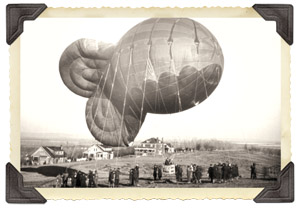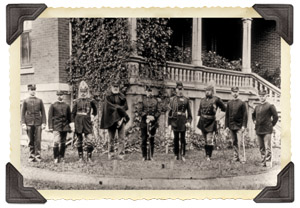Although the construction of Fort Omaha was completed more than a century ago, the buildings and grounds today reflect a distinctively modern attitude and mission.
 In early 1868, before the construction of Fort Omaha and after a major clash between the U.S. Army's Department of the Platte and the Lakota tribe of Sioux Native Americans, the U.S. government signed a treaty agreeing that the army would abandon posts along the Bozeman Trail. To replace the abandoned posts, the army began planning for a single new post—a place where troops could be stationed and sent out by rail whenever needed. By this time, the Union Pacific Railroad reached the Rockies.
In early 1868, before the construction of Fort Omaha and after a major clash between the U.S. Army's Department of the Platte and the Lakota tribe of Sioux Native Americans, the U.S. government signed a treaty agreeing that the army would abandon posts along the Bozeman Trail. To replace the abandoned posts, the army began planning for a single new post—a place where troops could be stationed and sent out by rail whenever needed. By this time, the Union Pacific Railroad reached the Rockies.
Omaha, a young but growing city, recognized the potential for economic growth and competed with other towns to win the planned post. The city cited its railroad and river transportation systems and already established businesses as the support the army would need. Civic leaders purchased 42 acres of land four miles north of Omaha from Augustus Kountze, a prominent Omaha banker, and offered to lease it to the government at an undervalued price for the new headquarters. The army accepted the offer.
The first structures were wood frame and built facing the rectangular parade ground of approximately 30 acres. The new post housed a regiment of more than 650 men. As new buildings were constructed, the early building arrangement remained.
 Fort Omaha's initial purpose was to guard the important pioneer settlement on the junction of the railroad and the Missouri River. Steamboats transferred munitions, mules, horses and supplies up the Missouri to equip Fort Omaha's cavalry units.
Fort Omaha's initial purpose was to guard the important pioneer settlement on the junction of the railroad and the Missouri River. Steamboats transferred munitions, mules, horses and supplies up the Missouri to equip Fort Omaha's cavalry units.
When the army required department commanders and officers to live on the post in 1878, the first brick structure was built for General George Crook, Commander of the Department of the Platte from 1875-1882. (The Department of the Platte included present-day Iowa, Nebraska, Wyoming, Utah, Montana and a portion of southeastern Idaho.) In his spacious home, General Crook entertained distinguished guests including presidents of the United States.
Metropolitan Community College received the deed to the 70-acre site in August 1975, and through extensive renovations and refurbishing, Fort Omaha became MCC's first permanent campus. MCC's deed stipulates that the parade ground must be maintained as an open field and that the exteriors of brick buildings cannot be changed. The College has preserved Fort Omaha's historic look while creating an environment conducive to a progressive, two-year college.
Take a virtual walking tour of the Fort Omaha Campus.